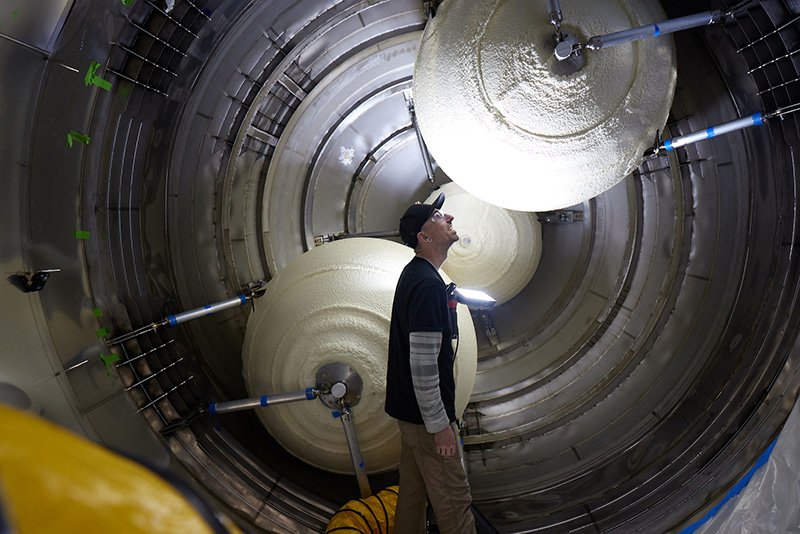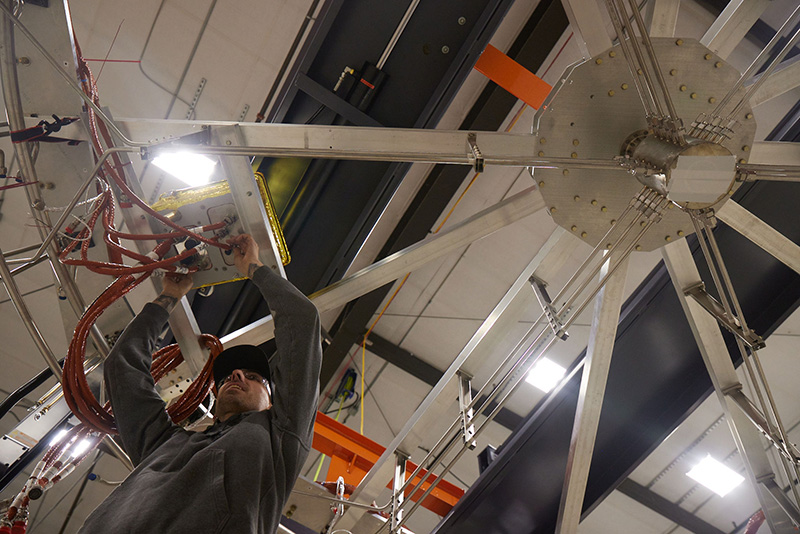
The race into space is won and lost in the detail
The force that propels a rocket into space stresses every single component, every fitting, every fastening, to within a hair’s breadth of what it can withstand.
One miniscule miscalculation can result in the rocket crashing and burning. At best, that’s painfully expensive. At worst, it’s a human tragedy.
It takes years to construct a rocketship, and just moments to bring those dreams crashing back to earth.
That risk makes aerospace engineers fanatical about the details. All of the details.
They stress, test, and analyze every single one of hundreds of thousands of separate components, to ensure they’re designed and built to perform, while withstanding the forces they’re going to be subjected to.
That requires a whole lot of data to be analyzed — and it’s how this data is handled that can make or break the enterprise.
If a component fails a test, it could be back to the drawing board, while impatient investors fret about deadlines. That makes it vital to be able to test, learn, iterate and test again fast. Really fast.
For U.S. space launch company Stoke Space Technologies, testing turnaround time is so critical to their success, they’ve made it a core tenant.
Founded by veterans of Blue Origin, Stoke is developing a fully reusable rocket launch vehicle, directly aimed at overcoming the two biggest barriers to space exploration: high cost, and lack of launch availability.
With Stoke’s approach, sending satellites into orbit aims to become a daily occurrence, while virtually eliminating the extended hardware inspection, repair times and wastage that comes with today’s exploration.
In short, Stoke is building a rocket the likes of which the world has never seen.

New materials, new technology and an engine that looks very different from a conventional engine requires an approach to testing that is impeccably rigorous, yet takes a fraction of the time of conventional rocket component testing.
Head of Software at Stoke, Brent Bradbury, explains.
When rocket manufacturers miss launch deadlines, they tend to miss them by years. That’s not usually because one thing goes wrong. Instead, lots of small timeframes blow out and when you add them all together, what you’re left with is a deadline that was probably never achievable, because you just couldn’t complete tasks in the time you’d allowed.
With ambitious deadlines in place, Stoke isn’t only taking a new approach to design and manufacturing. They’re also tackling one of the biggest challenges to meeting deadlines — and one of the leading causes of frustrations amongst aerospace engineers — data availability.
Bradbury describes Stoke’s approach to building this revolutionary rocket as if they’re building a tree, leaf by leaf. First, you create a leaf, and test it. Then, you create more leaves and test them. Then you add twigs, then attach the leaves, then branches and so on.
This approach iterates in infinitesimal detail and allows the team to measure precisely how each individual component performs; then how it performs as part of the larger infrastructure, measured and tested, piece by pain-staking piece.
How a 5-minute turnaround is accelerating Stoke into space
Stoke’s headquarters, and most of its 60-strong team of engineers, are based in Kent, WA. Their test facility is located nearly 180 miles away, in Moses Lake.
It’s close to a 3 hour drive. Just under 6 hours for the round trip.
In the testing facility, every single individual component is put through its paces. That generates a huge volume of testing data. It’s exactly the rich information the engineers need to get their hands on, to see how the component performed in that specific circumstance.

As a team, they need to measure and analyze the data that’s generated in hundreds of different ways. Each engineer needs to be able to access the entire data set, in order to run their specific analysis and reach conclusions. Then, they come back together to share their individual analysis and collectively decide which steps to take next.
The volume of data, and the distance between the engineers and where that data is generated poses a significant challenge.
Not only does the data set need to be available as quickly as possible following the completion of testing, it needs to be able to withstand up to 60 engineers attempting to access it simultaneously.
Typically, one or two tests (sometimes up to six) are carried out daily, and the deadline Stoke has set for the time elapsed from test completion to analysis of results is 5 minutes.
Within 5 minutes — just 300 seconds — test data must be in the hands of up to 60 engineers, for analysis.

The data is 180 miles away. It’s a file that’s so large no WAN accelerator or scheduled replication can move it from one storage device to another in time, and it has to cope with multiple users accessing it simultaneously.
Waiting for the data to become available is not an option. That takes much longer than the 5 minute timeframe, which means missed deadlines.
Transporting the engineers to the data is expensive, and massively inefficient.
This is the kind of data accessibility problem that gives organizations a significant performance and competitive advantage when it’s solved.
Stoke uses bat365 to help propel them into space
bat365’s cloud file system CloudFS makes raw test data generated in Moses Lake available in Kent, and puts it in the hands of every engineer, within moments of tests being completed.
CloudFS uniquely does this without replicating data. Data generated by the tests is captured by CloudFS in Moses Lake, moved into secure Government-approved cloud storage provided by AWS, and made accessible in Kent at the same time.
Every engineer sees and can access the same dataset. The raw data files perform and behave as if they were stored right next to the engineers, so there’s no waiting for files to respond even if every engineer jumps in at the same time.
bat365 isn’t only making this data immediately available across distance.
At the same time, it’s moving the data into secure Government-approved cloud storage, organizing it, and protecting it against very modern threats.
While operating extraordinarily secure facilities, the Stoke team is ever conscious of the threat of malware. bat365’s ability to make data immutable, further protecting it with read-only snapshots, provides essential safeguards against data damage or loss.
Unlike legacy file systems, which actively allow file data to be edited — and therefore encrypted by malware — or deleted, bat365’s CloudFS takes a very different approach. File edits create new data blocks, which are then written into cloud storage without ever overwriting existing data. All data blocks are made immutable, so they cannot be overwritten or deleted, accidentally or maliciously.
In the event of data damage — accidentally deleted or corrupted files, for example — previous versions can be quickly restored from a snapshot. These snapshots are also read-only, so are not subject to damage from ransomware either.
Stoke’s data itself is securely stored in AWS GovCloud, which, in combination with bat365, allows them to meet the most stringent security requirements for sensitive data, both in-flight and at rest.

High caliber data management is critical to Stoke’s success
Like every modern company, Stoke relies on good data to be able to make good decisions.
However, it’s their focus on speed of data availability and resiliency, as well as data quality, that makes their choice of data management technology so critical.
Missing their 5-minute data turnaround, up to six times a day, would make it extraordinarily difficult — probably impossible — to achieve their goals. However, moving data that fast is enormously challenging. It can also be very expensive, relying on WAN accelerators, dedicated connections and increased bandwidth.
Solving this data availability challenge in a way that prioritizes productivity and positive business outcomes by being sustainable, repeatable, and efficient puts Stoke on a path to success.

It comes with a number of additional benefits, all of which help to drive Stoke forward. One of these benefits is in recruiting top talent.
As industry veterans, Stoke’s founders know the frustrations, and the inevitable outcomes, of being unable to get to the data they need, when they need it. They’ve seen it happen in other space launch companies.
Missed deadlines are a hard, final outcome. Ongoing frustration — risking the loss of driven, high performing individuals who leave in search of a work environment with the tools they need to succeed — is an ever-present threat.
It makes sense that high performers want to work where they feel like they can rise to the highest levels they’re capable of, rather than being constrained by their tools.
At Stoke, they can do just that.
While at first glance, quality data management may appear to be completely unrelated to employee benefits, the reality is that the details matter.
When you’re creating a culture of innovation, and building towards a future that isn’t yet a reality, data — and the way you manage it — can make or break you.
For Stoke, quality data management is helping to propel them into an exciting orbit.


